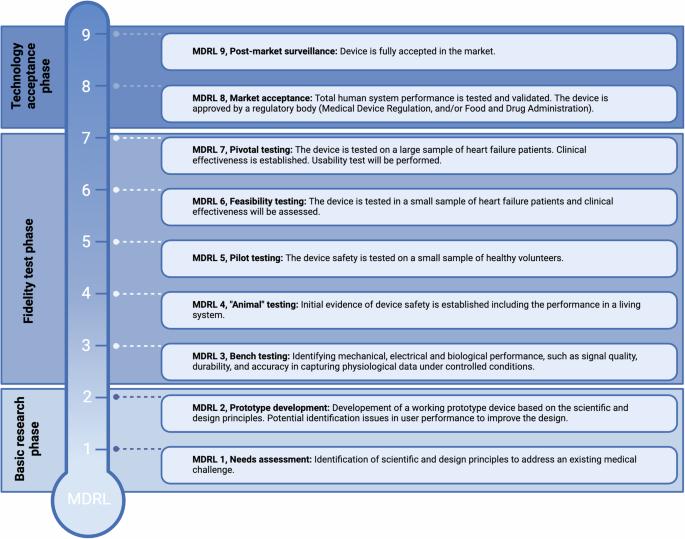无创可穿戴技术在心力衰竭管理方面的进展范围综述
IF 12.4
1区 医学
Q1 HEALTH CARE SCIENCES & SERVICES
引用次数: 0
摘要
可穿戴设备通过跟踪关键生理参数,为加强心力衰竭(HF)患者的远程监护(RM)提供了一种前景广阔的解决方案。尽管可穿戴设备潜力巨大,但由于缺乏严格的评估,其临床整合仍面临挑战。本综述旨在总结目前的证据,并使用医疗设备就绪水平(MDRL)评估可穿戴设备在临床实践中的就绪程度。通过系统检索,从3112篇文章中发现了99项研究,其中只有8项是随机对照试验。加速度计是使用最多的测量技术。用于高频监测的消费级可穿戴设备在研究中占主导地位,其中大部分处于可行性测试阶段(MDRL 6)。所述可穿戴设备中只有两款是专门为高频 RM 设计的,并获得了美国食品及药物管理局的批准。因此,由于有力证据有限,可穿戴设备对心房颤动管理的实际影响仍不确定,这对其融入心房颤动护理构成了重大障碍。本文章由计算机程序翻译,如有差异,请以英文原文为准。

A scoping review on advancements in noninvasive wearable technology for heart failure management
Wearables offer a promising solution for enhancing remote monitoring (RM) of heart failure (HF) patients by tracking key physiological parameters. Despite their potential, their clinical integration faces challenges due to the lack of rigorous evaluations. This review aims to summarize the current evidence and assess the readiness of wearables for clinical practice using the Medical Device Readiness Level (MDRL). A systematic search identified 99 studies from 3112 found articles, with only eight being randomized controlled trials. Accelerometery was the most used measurement technique. Consumer-grade wearables, repurposed for HF monitoring, dominated the studies with most of them in the feasibility testing stage (MDRL 6). Only two of the described wearables were specifically designed for HF RM, and received FDA approval. Consequently, the actual impact of wearables on HF management remains uncertain due to limited robust evidence, posing a significant barrier to their integration into HF care.
求助全文
通过发布文献求助,成功后即可免费获取论文全文。
去求助
来源期刊

NPJ Digital Medicine
Multiple-
CiteScore
25.10
自引率
3.30%
发文量
170
审稿时长
15 weeks
期刊介绍:
npj Digital Medicine is an online open-access journal that focuses on publishing peer-reviewed research in the field of digital medicine. The journal covers various aspects of digital medicine, including the application and implementation of digital and mobile technologies in clinical settings, virtual healthcare, and the use of artificial intelligence and informatics.
The primary goal of the journal is to support innovation and the advancement of healthcare through the integration of new digital and mobile technologies. When determining if a manuscript is suitable for publication, the journal considers four important criteria: novelty, clinical relevance, scientific rigor, and digital innovation.
 求助内容:
求助内容: 应助结果提醒方式:
应助结果提醒方式:


